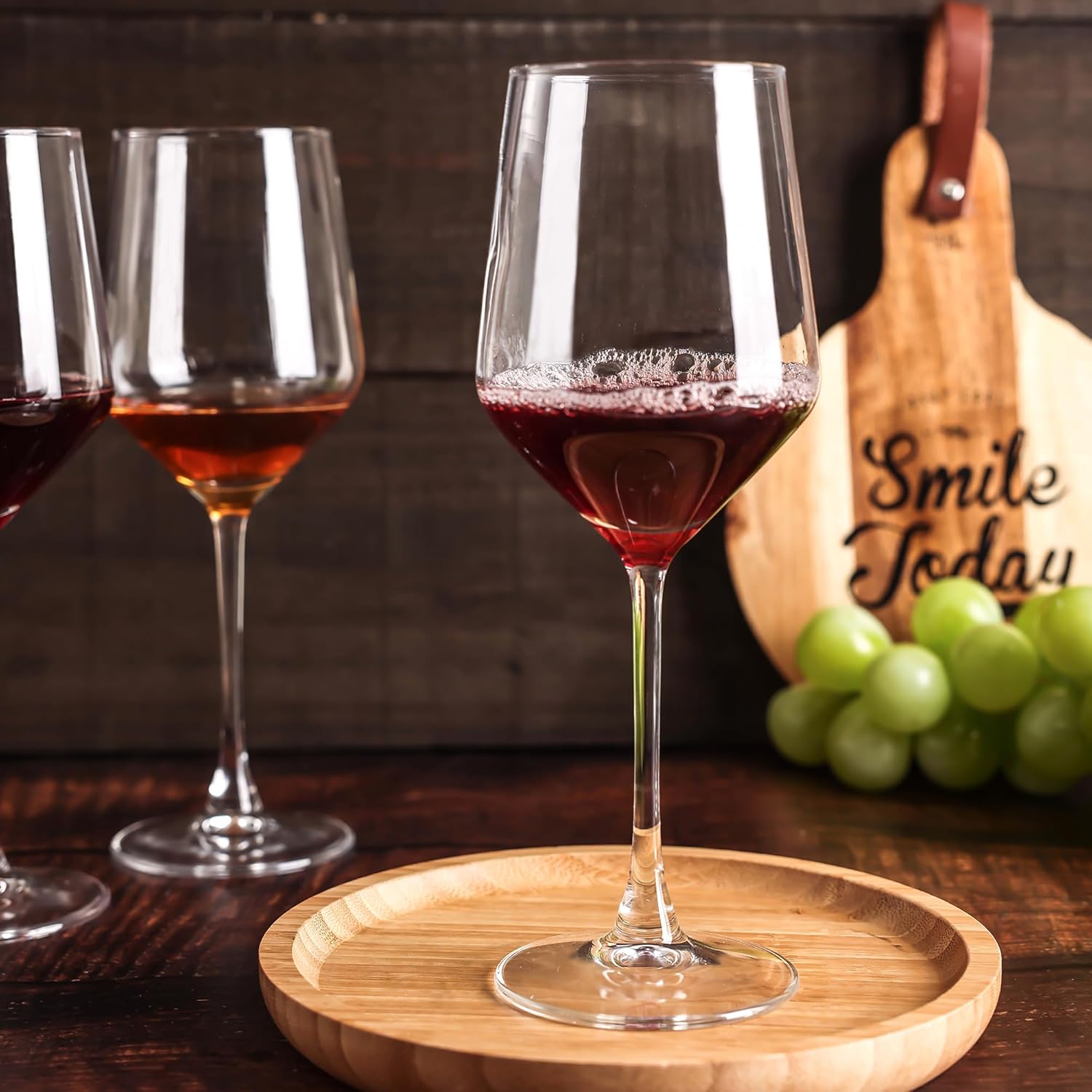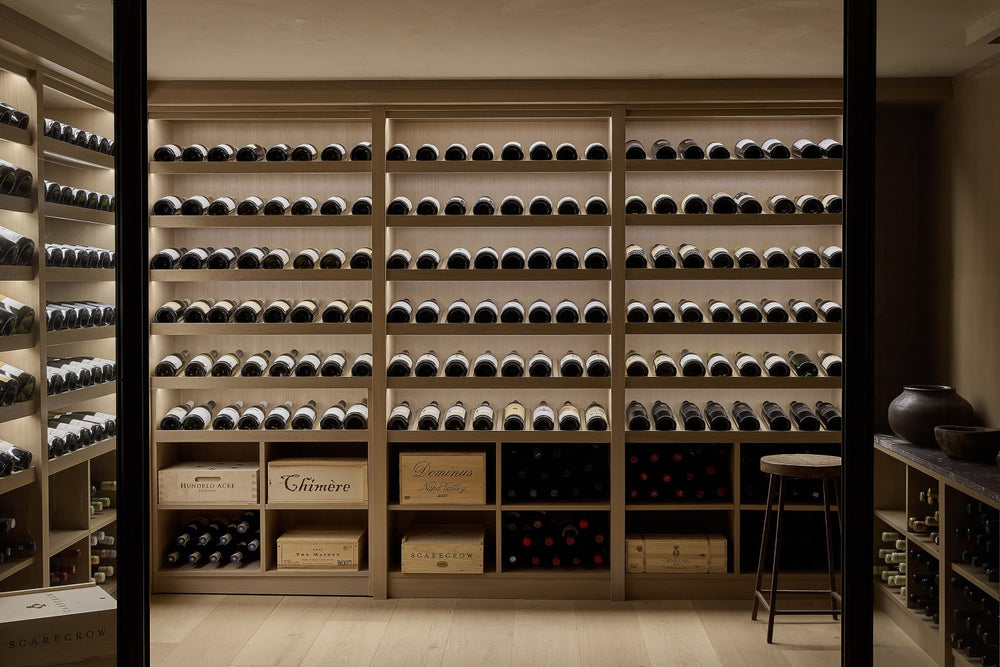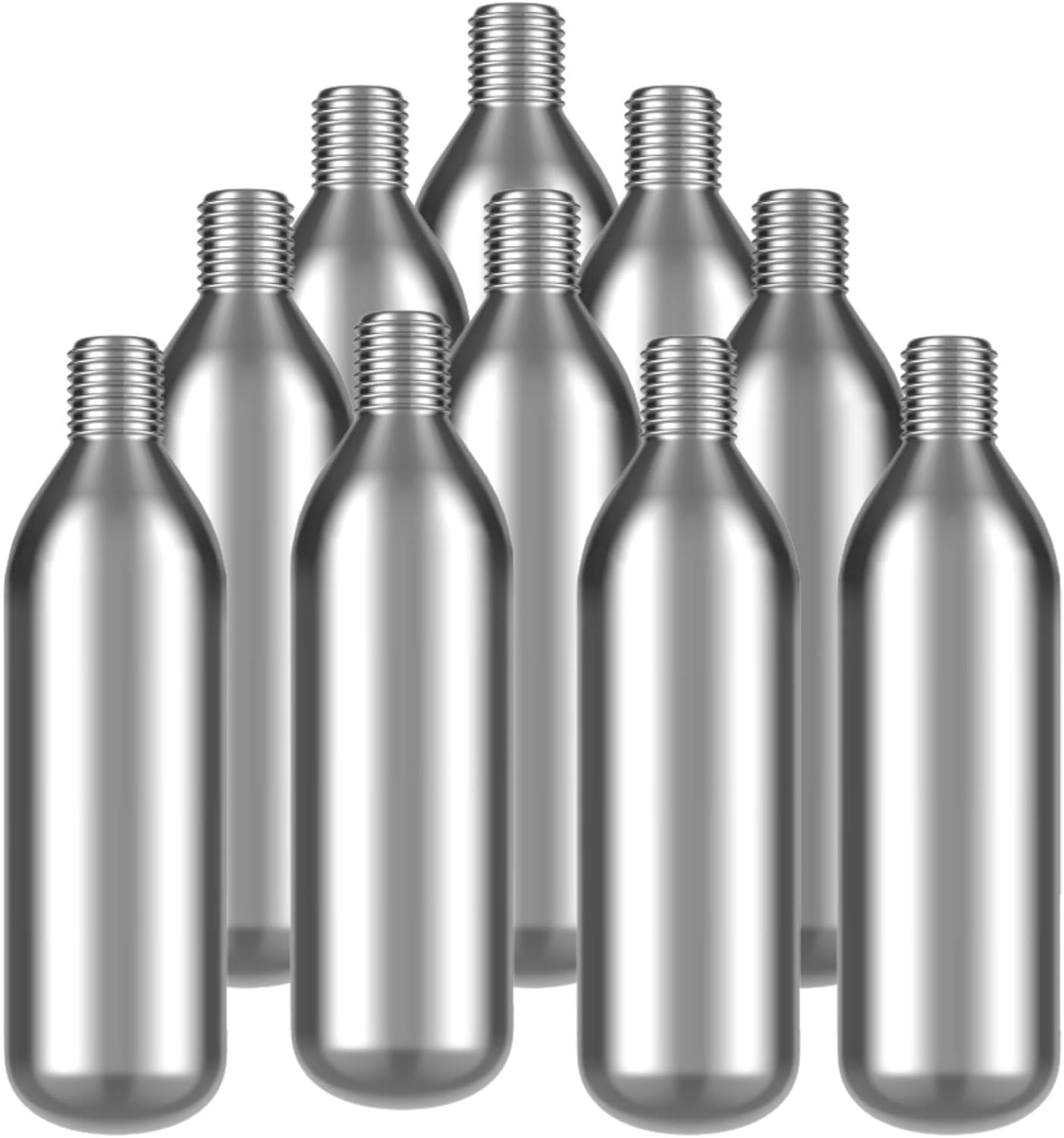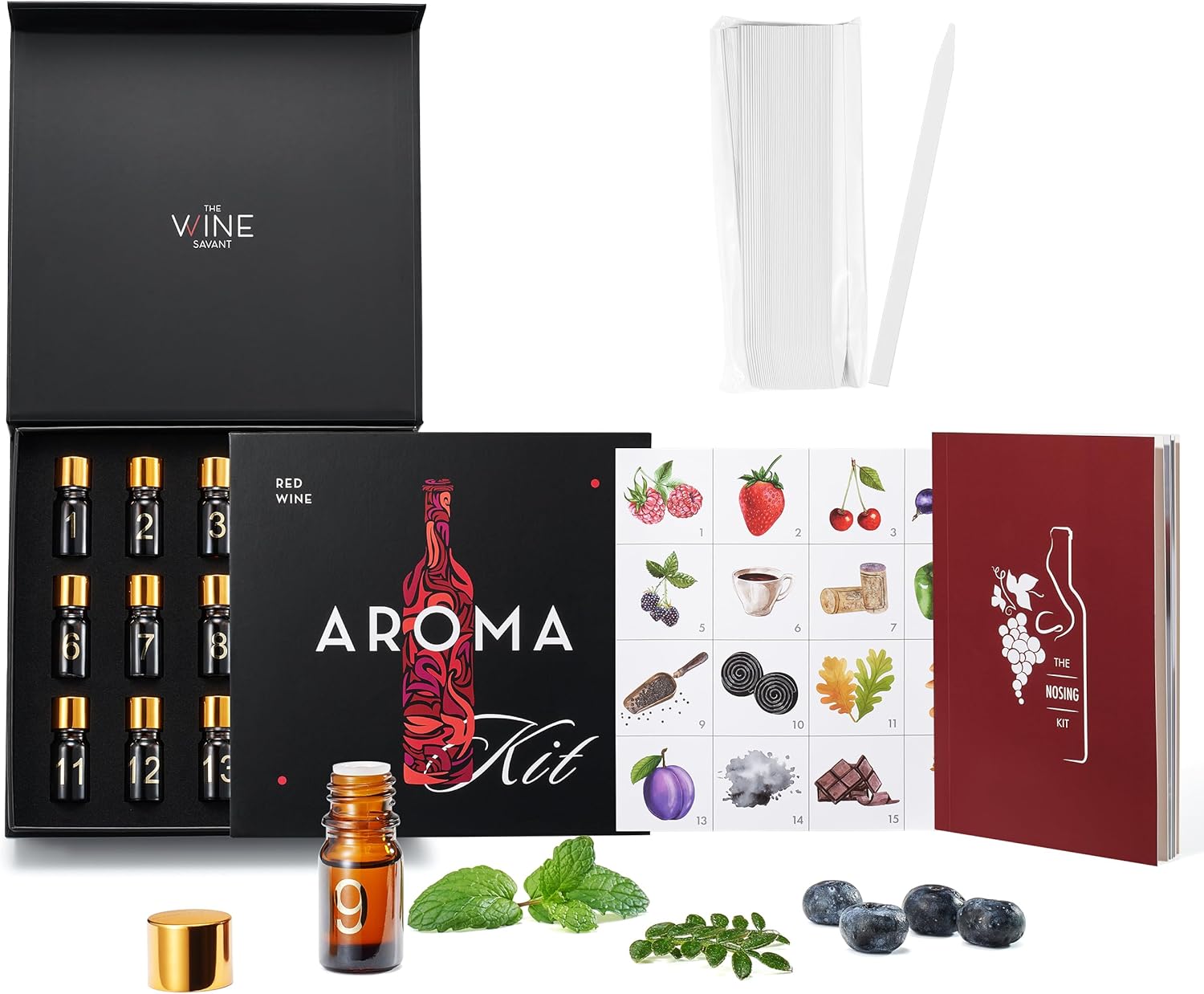What is Tannin in Wine? A Beginner’s Guide to “The Pucker”
You’ve been there. You take a sip of a big, bold red wine, maybe a Cabernet Sauvignon. You swallow, and an invisible force instantly dries out your entire mouth. It feels like your tongue is wearing a tiny, wool sweater. You pucker, you smack your lips. That sensation? That is tannin.
For the U.S. wine drinker, “tannin” is the most-used and least-understood word in the entire wine glossary. We’re told a wine “has tannins,” but what does that mean? Is it good? Is it bad? Is it the thing that gives you a headache? (Spoiler: it’s probably not).
Here at Wine Army, we’re demystifying this essential concept. Tannin isn’t a flavor. It’s a feeling. It’s a textural component, a structural element that is absolutely critical to the world’s greatest red wines. Understanding tannin is the key that unlocks everything from food pairing to wine storage and aging.
In this 4000+ word deep-dive, we’re going to give you the ultimate U.S. consumer’s guide to tannin. We’ll cover what it is, where it comes from, which wines have it, and—most importantly—how to make it your friend. By the end, you won’t just understand tannin; you’ll be seeking it out.
What’s In This Guide
- The 30-Second Tannin Test (Do This Now!)
- What is Tannin? (The Simple Science)
- Where Do Tannins Come From? (The 4 Sources)
- Why Tannin is Wine’s “Backbone”
- 1. Structure & Mouthfeel
- 2. Aging Potential (The Preservative)
- 3. Food Pairing (The Magic Trick)
- The Tannin Spectrum: A U.S. Drinker’s Guide
- How to “Tame” Tannins: The 3 Great Tools
- The Tannin Toolkit: 5 Amazon Products to Master “The Pucker”
- 1. The “Must-Have” Tool: Le Chateau Wine Decanter
- 2. The “Sommelier’s Bible”: Wine Folly Master Guide
- 3. The “Big Glass” Theory: A Set of Bordeaux Glasses
- 4. The “Fast” Solution: Aervana Electric Wine Aerator
- 5. The “Tasting” Tool: Vacu Vin Wine Saver
- Tannin in Context: The Entire Wine Journey
- Tannin Myths vs. Facts (The FAQ)
- The Final Word: Learning to Love the “Grip”
The 30-Second Tannin Test (Do This Now!)
Before we go any further, let’s get a real, physical feel for tannin. You don’t even need wine. Go to your kitchen and brew a cup of strong black tea (like an English Breakfast or Orange Pekoe). Let it steep for 5-6 minutes, way longer than you should. Now, let it get cold and take a sip. Don’t add sugar or milk.
Swish it around. Feel that? That powerful, bitter, astringent sensation that makes your mouth feel dry and rough? THAT is tannin.
Want a few more examples? You can also feel tannin when you:
- Bite into the skin of a raw almond or walnut.
- Eat a piece of very dark (85%+) chocolate.
- Eat an unripe banana.
That “puckering,” “drying” feeling is a key part of the wine terminology guide. It’s not a “flavor” like “cherry” or “vanilla.” It’s a tactile sensation, a texture. Now, let’s figure out what it’s doing in your wine.
What is Tannin? (The Simple Science)
In the simplest terms, tannins are a group of natural compounds called polyphenols. They are found in many plants, barks, leaves, and fruits. Their job in nature is to make the plant unappetizing to animals (that bitter, “yuck, not ripe” taste is a defense mechanism).
In wine, tannins are the magic ingredient that gives a red wine its structure, its “chewiness,” and its ability to age for 50 years. They are a critical part of the wine’s composition, just like acid, alcohol, and fruit flavor.
Scientifically, the “drying” sensation you feel is real. Tannins are “sticky” molecules. They bind to the proteins in your saliva (the stuff that makes your mouth “wet”) and essentially pull them out of solution. This creates friction, which your brain interprets as “dryness.”
Where Do Tannins Come From? (The 4 Sources)
Tannin in your glass isn’t just one thing. It’s a blend that comes from four possible places, and the combination of these sources defines the wine’s style.
- Grape Skins (The #1 Source): This is where almost all the tannin in red wine comes from. The process of making red wine involves crushing the grapes and letting the juice soak with the skins, seeds, and stems (this is called “maceration”). The longer the soak, the more color and tannin are extracted. This is also why white wine (where the juice is pressed off the skins immediately) has virtually no tannin.
- Grape Seeds (Pips): Grape seeds are loaded with tannins, but they are often very bitter and “green.” A good winemaker tries *not* to crush the seeds, as this releases these “harsh” tannins.
- Grape Stems (Stems): Sometimes, a winemaker will intentionally throw the entire bunch—stems and all—into the fermenter. This is called “whole cluster fermentation” and is common with varietals like Pinot Noir and Syrah. It adds a “stemmy,” “spicy,” or “tea-like” tannin that can be beautiful.
- Oak Barrels (The “Flavor” Tannin): This is the secret source. Oak wood has its own tannins! When a wine (either red or white) is aged in new oak barrels, it pulls “wood tannins” out of the barrel. These are often “sweeter” or “silkier” than grape tannins and add flavors of vanilla, baking spice, and cedar. An oaked Chardonnay (a white wine) can have a small amount of tannin from this source.
Why Tannin is Wine’s “Backbone”
In the U.S. market, especially for new drinkers, “tannin” is often seen as a negative. But in the fine wine world, it’s the #1 indicator of quality and a wine’s “seriousness.” Here’s why you *want* tannin in your red wine.
1. Structure & Mouthfeel
If fruit and alcohol are the “flesh” of a wine, and acid is its “nerve,” then tannin is its “skeleton” or “backbone.” It gives the wine shape, weight, and presence in your mouth. A wine with no tannin can feel “flabby,” “thin,” or “simple.” A wine with high tannin feels “structured,” “chewy,” “grippy,” and “bold.” It’s the difference between 1% milk and whole milk—one just has more texture and weight.
2. Aging Potential (The Preservative)
This is the most important job of tannin. Tannin is a natural antioxidant. It acts as a preservative, protecting the wine from the slow, damaging effects of oxygen over time. This is the entire secret to how to store wine at home for decades.
A wine with high tannin and high acidity (like a Cabernet Sauvignon from Napa or a Nebbiolo from Italy) is like a caterpillar in a chrysalis. The tannins are “tight” and “harsh” when the wine is young. But over 10, 20, or 50 years, those tannins undergo a process called “polymerization.” They slowly bind together, get heavier, and fall to the bottom of the bottle as fine sediment. As they fall away, they leave behind a wine that is no longer “harsh” but “silky,” “smooth,” and “velvety,” with complex secondary flavors of leather, tobacco, and earth.
A low-tannin wine (like a Pinot Noir) is delicious, but it’s more fragile. It’s built for elegance, not a 50-year lifespan. This is why your wine cellar essentials are built around high-tannin wines.
3. Food Pairing (The Magic Trick)
This is where tannin becomes your best friend at the dinner table. Remember how tannins bind to protein in your saliva? Well, they will also bind to fat and protein in your food. This creates one of the greatest culinary magic tricks in the world, and it’s the core of our guide on how to pair wine with food.
Here’s the classic example: You take a bite of a rich, fatty ribeye steak. It coats your mouth in delicious, savory fat. Then, you take a sip of a high-tannin Cabernet Sauvignon. The tannins *instantly* bind to those fats and “scrape” them from your palate, leaving your mouth feeling clean and refreshed. In return, the fat smooths out the “harshness” of the tannins, making the wine taste fruitier and more supple. Each one makes the other better. This is a culinary “win-win.”
The Tannin Spectrum: A U.S. Drinker’s Guide
Not all red wines are created equal. If you know you love (or hate) that “puckering” feeling, this is your shopping list. We’ll break it down from high to low. (And for a deep dive, check out our guide to wine varietals).
| Tannin Level | Common Red Wines (Varietals & Regions) | Tasting Notes & Feel |
|---|---|---|
| HIGH |
|
Powerful “pucker.” Very drying. Can be “grippy” or “firm.” Needs food or time to soften. |
| MEDIUM |
|
A noticeable “grip,” but not overwhelming. More “velvety” or “dusty.” Very food-friendly. |
| LOW |
|
“Silky,” “smooth,” or “juicy.” Very little to no pucker. Easy to drink without food. |
| ZERO (or trace) |
|
No pucker at all. “Crisp” or “round” from acidity/sugar. “Orange wines” (whites fermented on skins, often found in natural wine shops) are the exception and *can* be very tannic. |
How to “Tame” Tannins: The 3 Great Tools
You just brought home a “HIGH” tannin wine. You open it, and it’s a “tannin-bomb”—so harsh and dry it’s no fun to drink. Don’t worry! You don’t have to wait 10 years. You can “tame” those tannins right now, in your kitchen.
Tool 1: Aeration (The “Quick-Age” Button)
Young, tannic wine is “closed” or “tight.” It needs to “open up.” The #1 way to do this is to expose it to oxygen. Oxygen begins a rapid, micro-oxidation process that softens the tannins and releases the trapped fruit aromas. This is the entire purpose of the great wine aerator vs. decanter debate.
- Decanting: This is the classic method. You pour the *entire* bottle into one of the best wine decanters. The “splashy” pour introduces air, and the large surface area in the decanter lets the wine “breathe.” For a big Napa Cab, give it 60-90 minutes in a decanter, and it will be a different, more beautiful wine.
- Aerating: This is the “instant” method. A pour-through aerator (like a Vinturi) or one of the best electric wine aerators (like an Aervana) forces air *through* the wine as it goes from the bottle to the glass. This is like “flash-decanter” for a single glass.
Tool 2: Food (The “Magic Eraser”)
We covered this, but it’s the most delicious tool. The rule is simple: High-tannin wine demands high-fat and high-protein food. The fat and protein in the food will bind to the tannins, making the wine taste smooth and fruity.
- Fatty steak (Ribeye, New York Strip)
- Rich, hard cheeses (Aged Cheddar, Parmesan)
- Heavy, rich stews or braised meats
Next time you’re hosting, put out a cheese board on a wine serving tray with your Cabernet. Watch the wine transform with every bite of cheese. It’s the “Why” behind how to pair wine with food.
Tool 3: Time & Cellaring (The “Slow-Cook” Method)
This is the “pro” move. If you taste a young wine and all you get is “grippy” tannin, it’s not ready. This is a wine to *cellar*. Learning how to store wine at home is the key. You don’t need a million-dollar cellar. A simple modular wine rack in the coolest, darkest part of your house (like a basement closet) is a great start. Check out our guide on how to store wine without a fridge. The tannin, your natural preservative, will do its work, and in 5-10 years, your patience will be rewarded.
The Tannin Toolkit: 5 Amazon Products to Master “The Pucker”
Ready to put your knowledge into practice? Here are 5 essential Amazon products for the U.S. consumer who wants to understand and master wine tannins.
1. The “Must-Have” Tool: Le Chateau Wine Decanter
Le Chateau Hand-Blown Crystal Wine Decanter

This is your #1 weapon against a “tannin-bomb.” If you are going to drink big, U.S. Cabs, you need a decanter. This Le Chateau is an Amazon bestseller for a reason. It’s hand-blown, lead-free crystal, and its wide 8.5-inch base provides a massive surface area for aeration. Pouring a young, $50 Napa Cab into this for an hour before dinner is the difference between a “good” wine and a “great” one. It softens the tannins, releases the fruit, and looks stunning on your table. It’s the king of the best wine decanters.
(+) Pros
- Dramatically softens harsh tannins
- Releases aromas in young, “closed” wines
- Large surface area for maximum aeration
- Beautiful, hand-blown centerpiece
(-) Cons
- Can be difficult to clean (needs a special brush)
- Fragile (it’s crystal)
2. The “Sommelier’s Bible”: Wine Folly: The Master Guide
Wine Folly: The Master Guide (Magnum Edition)

How do you find out if a wine is high-tannin *before* you buy it? You get this book. This is the single best, most visual, and most accessible wine book for a U.S. audience. It’s the physical version of our wine terminology guide. It has a full-page profile on every major grape, complete with a visual “meter” for Acidity, Body, and—you guessed it—Tannin. You can instantly see that Cabernet is high, and Pinot is low. It’s an indispensable guide that will teach you how to read a wine label and what to expect from every bottle.
(+) Pros
- Stunning, easy-to-read infographics
- Visual “meters” for tannin, acidity, and body
- Covers all major wine grapes and regions
- Makes learning about wine fast and fun
(-) Cons
- It’s a book, not a magic wand (you have to read it!)
3. The “Big Glass” Theory: A Set of Bordeaux Glasses
Riedel Winewings Cabernet Sauvignon Glass (Set of 4)

Why are the best wine glasses for red wine so big? Tannin. A large bowl (like this “Bordeaux” or “Cabernet” glass) does two things: 1) It’s a “mini-decanter” that provides a large surface area for air to soften tannins right in the glass. 2) It funnels the aromas to your nose. This Riedel “Winewings” set is specifically designed for big, tannic, new-world reds. The flat bottom is radical, but it provides one of the largest air-to-wine surfaces possible. Drinking a Napa Cab from this versus a small “diner” glass is a night-and-day difference.
(+) Pros
- Specifically designed to soften tannins and amplify aromas
- Large bowl provides in-glass aeration
- Dramatically improves the experience of bold reds
- Dishwasher-safe crystal
(-) Cons
- A significant investment for glassware
- Large and fragile
4. The “Fast” Solution: Aervana Electric Wine Aerator
Aervana One-Touch Electric Wine Aerator

What if you don’t want to wait an hour for a decanter? This is your tool. The Aervana is a high-tech solution that sits on top of your bottle. You press a button, and it dispenses the wine directly into your glass, but it *also* “injects” it with air as it pours. It’s the “instant” button for taming tannins. It’s a fantastic party trick, a great wine gift idea, and a genuinely effective tool for the U.S. consumer who values speed and convenience. It’s the “on-demand” answer to the aerator vs. decanter question.
(+) Pros
- Instantly aerates and softens tannins, glass-by-glass
- Easy one-touch operation
- Acts as a “mess-free” pourer
- Great “wow” factor for guests
(-) Cons
- Requires batteries
- Not as “thorough” as a 1-hour decant
5. The “Tasting” Tool: Vacu Vin Wine Saver
Vacu Vin Wine Saver Pump with 2 Vacuum Stoppers

One of the best ways to understand tannin is to see how it changes. This is where the Vacu Vin comes in. Open a big, tannic Cab. Have one glass. Now, use this pump to suck the air out of the bottle and seal it with one of the best wine stoppers. Try it again on Day 2. And Day 3. You will *feel* the tannins soften day-by-day. This simple, cheap tool lets you run your own wine-aging experiment. It’s the most practical, affordable choice in the Coravin vs. Vacu Vin debate and a must-have for any wine drinker.
(+) Pros
- Lets you taste a wine’s evolution over 3-5 days
- Dramatically extends the life of your wine
- The best-selling, best-value preserver
- Lets you open a bottle “just for one glass”
(-) Cons
- Manual pumping required
- Do NOT use on sparkling wine
Tannin in Context: The Entire Wine Journey
Understanding tannin is a massive step, but it’s just one part of the fun. Once you can identify tannin, you start to see how it connects to *everything* else in the wine world. It’s a thread that ties the whole hobby together.
Your journey starts in the wine aisle, where you use your new skills to read the wine label. You see “Napa Cabernet” and “14.5% ABV” and you already know it’s a high-tannin wine. You know you’re not just buying a simple sipper; you’re buying a bottle that needs food.
You get it home. Now what? You need the right tools. You need a good, reliable opener. An electric wine opener makes it effortless, especially after you’ve cleanly removed the top with a wine foil cutter. (And you’re certainly not resorting to the “shoe trick” from our guide on how to open a wine bottle without a corkscrew).
Because you know it’s tannic, you decant it. You serve it in your big Bordeaux glasses. You pair it with a steak. Your friends are amazed. This is what being a “wine person” is all about. It’s not about being snooty; it’s about making the wine taste as good as possible. It’s about being a good host, which is one of the key wine accessories every host needs.
What about the rest of your new collection? You’re starting to buy from wine subscription boxes, and you’re exploring affordable wines and special wine gifts. You need to store them. Your new high-tannin wines are your “agers.” They go into your modular wine rack in the basement, an eco-friendly storage solution, to be opened in 5 years. Your “low-tannin” Pinots are for drinking now.
And when you travel? You’re not just bringing a “bottle of red” to a party. You’re bringing a high-tannin Syrah that you know will be *perfect* with the BBQ. You carry it in a padded wine bag, or if it’s a summer picnic, a portable wine cooler. And if it’s a white wine? You’ll have your wine chiller sleeve or electric wine chiller ready to go.
See? Tannin is the key. It informs *all* these other decisions.
Tannin Myths vs. Facts (The FAQ)
Myth 1: Tannins in wine give me a headache.
Fact: This is almost certainly false. For 99% of the U.S. population, this is a case of “mistaken identity.” Tannins are in *many* things we consume, like tea, coffee, dark chocolate, and nuts. If you can drink a cup of strong black tea without a headache, you are not having a “tannin headache.”
The far more likely culprits are:
- Histamines: Naturally occurring compounds in red wine (especially) that can trigger allergic-like responses (headache, flushed skin) in sensitive people.
- Sugar: A high-sugar, high-alcohol combination (common in cheap, mass-market U.S. reds) is a classic recipe for a hangover.
- Dehydration: Alcohol is a diuretic. For every glass of wine, you should be drinking a glass of water.
Myth 2: Tannin is a flaw or a “bad” taste.
Fact: False. Tannin is a crucial structural component, not a flaw. A red wine *without* tannin would be a “flawed” red wine—flabby, simple, and unable to age. What you’re tasting is likely “harsh” or “unripe” tannins, which can be fixed with aeration or food.
Myth 3: All red wines are high in tannin.
Fact: Absolutely false. This is why people get “into” Pinot Noir. It’s a world-famous red wine prized for its low tannin levels, making it silky, smooth, and easy to drink on its own.
Myth 4: What’s the difference between “good” and “bad” tannins?
Fact: This is a great, advanced question! This is the difference between “ripe” (good) and “unripe” (bad) tannins.
- Ripe Tannins: Come from perfectly ripe grapes. They feel “grippy,” “velvety,” “powdery,” or “chewy.” They are prominent but not “mean.”
- Unripe (“Green”) Tannins: Come from underripe grapes or from crushing seeds. They feel “harsh,” “bitter,” “astringent,” and “angular.” They are aggressive and unpleasant.
The Final Word: Learning to Love the “Grip”
Tannin is not the enemy. It’s the soul of red wine. It’s the “pucker,” the “grip,” the “chew” that makes a wine interesting. It’s the “backbone” that allows a wine to stand up to a rich meal and the “preservative” that allows it to evolve into something magical after 20 years in a cellar.
Your mission, as a U.S. wine lover, is to stop fearing the tannin and start *managing* it. Understand it. Know when to aerate it, when to pair it with food, and when to just let it sleep in your cellar.
The best homework we can give you? Go out and buy two bottles: a $20 Pinot Noir from California and a $20 Cabernet Sauvignon from Napa. Pour them side-by-side. Feel the “silky” texture of the Pinot? Now feel the “firm grip” of the Cab? That’s it. You’re no longer just a wine drinker. You’re a wine *taster*. Welcome to the club.























